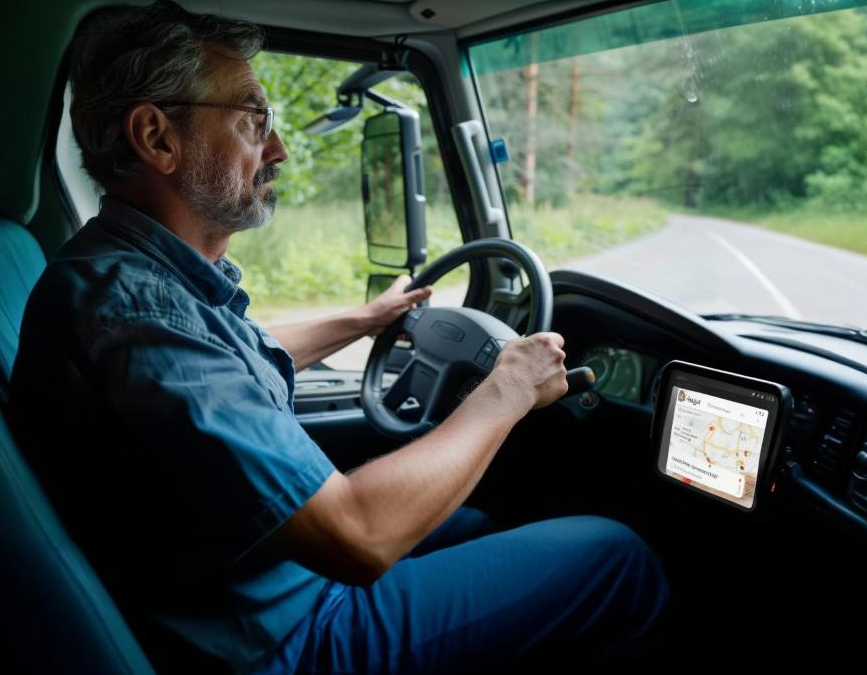Even though the market has been growing for years, the recent pandemic has pushed voice technology to evolve faster. In fact, the health crisis linked to COVID-19 has truly transformed our society. New public health concerns have driven this societal and economic evolution. Voice control devices help reach the new standards this evolution implies. With the fast-growing rate of smart assistants, voice-enabled devices tend to become standard. Businesses and individuals are demanding it more than ever and it is to keep up this trend! New user experience, hands-free user interface and advanced human-machine interactions are making the voice first movement more than just a trend.
“Beyond health systems and crisis management, this event has put back on the table all the questions about our uses, which have become the standard up to now”.
How is voice control leading us to a voicefirst world and which are the applications of this technology?
How is Voice control leading us to a voicefirst world?
Voice control enables to operate a digital interface hands-free, thanks to your voice. It is composed of several voice technologies including speech-to-text which allows it to process the spoken commands. From easy to more complicated commands, we will speak about how this technology has grown and why it has become so important in the voicefirst world.
A fast-growing technology
According to a globenewswire report, the global market for voice and speech recognition technology was estimated at US$7.7 billion in 2020. The same report projects it to reach 20.9 billion dollars by the year 2026. That is a huge growth for a niche market which includes speech and voice recognition technologies.
A rapidly evolving technology…
Since the advent of voice assistants such as Siri, Google Assistant or Alexa and so on, voice-enabled devices production has kept on growing. Nowadays, when looking for new stuff for your home or your working place, you are certainly confronted with a bunch of technological equipment you could control with your voice. Whether it is the TV, the lighting or the blinds… If you have ever wanted to be Iron Man, this is your era! Well, at least if you wanted to have a J-A-R-V-I-S -like assistant…
…Despite the obstacles
The pandemic has caused an important decline in hardware manufacturing operations during 2020. But it has also helped people develop their use of voice technologies, such as voice control, on a more regular basis. Indeed, a report from Juniper research shows that “usage of voice commands has increased since the Covid-19 outbreak with 52% of voice assistant users saying they use voice tech several times a day or nearly every day, compared to 46% before”. It clearly means that demand for voice control has grown according to the situation and brands have a vested interest in developing voice interfaces to improve their customers’ experience.
Voice controls add a new level of convenience and accessibility to any appliances you integrate them into. That is why the voice market is exploding. There are more and more voice-enabled devices, even when the use case does not present any benefits for end users. Is adding a voice control that enables Alexa to turn the water on on your kitchen faucet really indispensable? You will need to get there anyway. Well I am guessing that professionals could use one in some very (very) specific cases this technology, but otherwise it is totally gadgety. The adoption for these kinds of voice-enabled products shouldn’t be much high.
It is only an example of why you need to make sure you adapt your VUX. One of the keys to it is the utility, but you also need to make sure your voice controls aren’t too complicated.
Advantages of voice control
In a more and more multimodal environment, people should have at least two ways of interacting with any device. And guess what? Voice is usually a great choice in addition to traditional touch, because it is a natural way of interaction. Indeed, voice controls increase efficiency and allow people to multitask more easily. On the other hand, they allow disabled people or wounded ones, who usually struggle with accessibility, being able to use interfaces on their own.
Moreover, Speech recognition is a truly “touchless interaction” technology, reducing almost all physical contact with interfaces (terminals, screens, counters, etc.). In a post-pandemic context, touchless interactions are really important to reassure people and ensure their safety. Indeed, according to Hospitality Tech, 22% of consumers have stopped shopping with certain brands because they doubted their health and safety measures.
The power of voice, whether recognition or synthesis, is in its ability to respond quickly and intuitively to a need. Thanks to this performance, voice controls may help reduce bottlenecks and the number of people simultaneously in the same place, on the same service.
Voice technology, which was already in a good trend with 4.2 billion devices equipped (and doubling it by 2024 according to Juniper Research), has gained even more notoriety, thanks to its touchless and covid-free properties.
Fields of application for voice control
Often integrated into smart appliances, voice control’s capabilities have only scratched the surface of what is possible. Indeed, several fields have emerging useful applications of voice control.
Voice payments & voice shopping
Voice shopping is the fact of using your voice to make purchases. Whether it is food ordering, groceries or some concert tickets, you can control your smart assistants or voice-enabled apps by voice to make a purchase. In 2017, it already generated around $2 billion in revenue, and it keeps on growing. With this, businesses can offer a seamless and more convenient experience to their customers.
As the name indicates, voice payments are part of the touchless payment trend which allows people to pay without having to touch any interface. Moreover, thanks to voice biometrics, it is now possible to confirm an online payment by voice. With the rise of 2 factor authentication techniques, voice authentication helps making it more seamless and secure. Voice payments are set to grow proportionally to other voice-enabled devices and participate in the personalization of users’ experience.
Voice-enabled hotels and restaurants
After the pandemic, hospitality had to reinvent itself in order to keep being appealing but also to manage the new challenges of the sector. Indeed, even if people got back on vacation as soon as the lockdowns were done, the shortage in workforce in this field is yet today an obstacle to its perenniality.
Even before, the sector craved novelties. Today, you can find more and more voice-controlled devices in hotels with smart rooms, for example. But also in quick-service restaurants with voice activated ordering devices. Indeed, in 2021, McDonald’s created a strategic partnership with IBM in order to develop automated drive-thru lanes thanks to voice.
For hotels, voice control allows to improve the level of personnalisation offered to customers. With voice control devices, customers can adjust everything in their room as they want. Hospitality players can even complete it with the name of the customer to further the personalization. This one is an important aspect of stays at hotels. Moreover, voice control may help hospitality professionals or restaurant owners by reducing response times, ease booking processes or requests for room services. Thus, it participates in the customers’ satisfaction in the sense it allows staff taking care of them rather than focusing on administrative tasks for instance.
Smart devices (B2B & B2C)
Whether your business is B2B or B2C, there are several appliances which could use a little shaping thanks to voice control. According to a Smart Audio Report about voice technology: “62% of Americans age 18+ use a voice assistant on any device: smart speakers, smartphones, TV remotes, in-car systems, a computer/laptop or tablets. And 57% of voice command users use those commands daily”.
Voice control enhances experience and accessibility. In some fields, voice control commands may even be life-changing. Indeed, in a world where smart devices are becoming more and more wearables, the way people can control them is still mainly based on touch. However, how do professionals who need their hands to do other things? Voice control is a huge added-value to smart glasses, helmets and other kinds of smart devices as it is hands-free. For example, in supply chain or mechanical, voice commands are way much easier to use than digital controls.
Moreover, voice control commands also represent safety in a post-pandemic situation. Today, the employer brand is a strong argument for sales, taking care of employees is just as important as taking care of customers. Touchless interaction thanks to voice controlled-interfaces could then be an additional reassurance element.
Voice control in mobility
Voice control has been present in mobility for years but is yet to be fully exploited. Indeed, today you can make hands-free calls from your vehicle and some other commands… But there are plenty of utilities for voice control in order to enhance the experience of car owners. For example, car manufacturers could soon offer the ability to order food through in-car voice interfaces.
Another example is airports. Indeed, these were on the front line when health problems exploded as they are the cause of their migration. To fight against the inherent risks, ADP (Aéroport de Paris) decided to give free rein to innovation. Vivoka had the opportunity to win the Aéroports de Paris voice call for projects. This project mainly concerns the integration of speech recognition technologies into the various interfaces within the group’s airports.
Indeed several poles are subject to experimentation:
- Controlling elevators by voice in their various actions (ascending/descending, opening/closing the door…)
- Navigate the boarding and ticket printing kiosks with voice to limit the transmission of viruses on the first hand; facilitate the use of the tool on the other hand.
Pending evolutions of voice control systems
Knowing that voice technology is becoming more and more important, big advances are made making it more and more accurate.
Indeed, regarding the environment of your use case, voice control could have trouble getting what you want it to. That is why today Audio Front End (AFE) solutions exist and allow audio enhancement and noise filtering. Thanks to that, you could use voice controls anywhere, even in very noisy environments. Moreover, beamforming allows to concentrate signals toward the microphone which improves audio quality. It can be far- or near-field and allows you to evaluate and fine-tune the audio capture to perfectly match the recognition quality with the complexity of the noise environment. It doesn’t matter anymore if you work in a factory, in an airport or a quiet office.
In addition, we are now able to provide voice control systems in environments lacking connectivity. Indeed, offline voice control greatly reduces the need for an internet connection and latency. This allows people to use it wherever they are and makes it indispensable in some fields. For instance:
- Supply chain or factories where connection may be bad;
- In boats or aeronautics for example with high security system;
- For the army and so on…
Finally, voice control doesn’t HAVE TO be against GDPR policy. It can be fully embedded, as a private-by-design feature and then not process any personal data on the cloud. You can also make it on-premise so that it can benefit from connectivity performances and data privacy.
Final thoughts
With the growing adoption of voice assistants and all the new human-machine interaction tools, voice is becoming an unavoidable feature and isn’t a simple gadget anymore. The voice first movement has helped maintain safety in many organisations thanks to its touchless interaction nature. Accuracy is improving and voice is now a multimodal interaction tool that can be used on its own or in addition to other technologies. Voice controlled devices are more and more important and democratised because of their usefulness, accessibility. Growth toward a voice first world is only beginning.
Let’s stop putting voice everywhere, anywhere just because it is possible. Let’s develop features at the right places and keep the ground realities in mind so we can provide useful products or services for anyone in need.
Vivoka allows you to create reliable embedded voice commands thanks to the ASR integrated in its VDK. The VDK is an all-in-one solution where you can use every voice technologies in order to develop a completely custom voice assistant. It runs without the internet to ensure data safety and allows you to add complex vocabulary to personalise your users’ experience.
Don’t hesitate to contact us if you need any further information or get started evaluating our solution for free!







